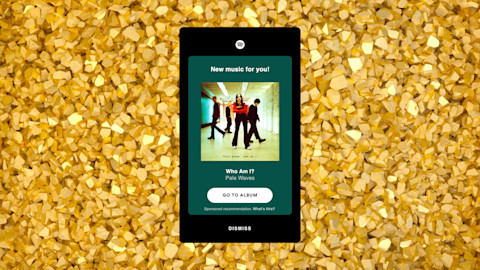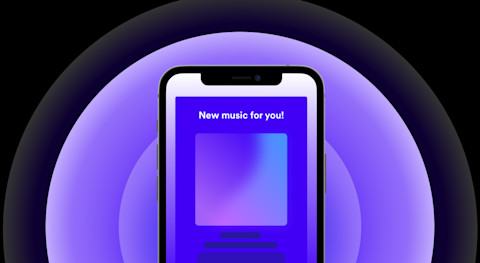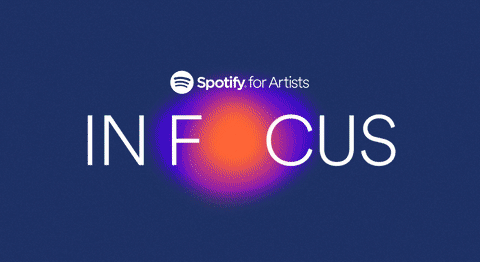The most compelling moments in your favorite Netflix series are created through a marriage of media. Tears fall in time to a sorrowful song, or a punchy industrial drum solo might punctuate the flurry of fists in a brilliantly choreographed fight scene. Placing a song in a film, television show, ad, or video game can help embed your song in the memory of new, attentive audiences. But in order for that to happen, the right music supervisor needs to hear your music. And before they fall in love with it, you need to make sure you’re business-ready, lest they pass you up for someone who is.
A music supervisor, according to the Guild of Music Supervisors, is ”a qualified professional who oversees all music-related aspects of film, television, advertising, video games and any other existing or emerging visual media platforms as required.” They’re the people who meld the aural and visual, facilitate the licensing of songs, and create the sonic worlds of your favorite characters.
“I think that ultimately, music is an extraordinarily powerful way to express emotion,” says Thomas Golubić, a music supervisor for shows such as Six Feet Under, Breaking Bad, and The Walking Dead. “It can be tremendously useful in trying to establish pace and tone. It does a lot of legwork for storytelling overall.”
Grabbing their ears.
So what’s the best way to get a music supervisor’s attention? The answer is complicated. Music supervisors have similar discovery processes as the rest of us. They use Spotify playlists, fall in love with bands their good friends recommend, and go to gigs to scout new sounds and talent. Gabe McDonough is a music supervisor at Music and Strategy (MAS), a creative music company for brands and agencies, and says that all the ways bands used to win over fans and sell records, like touring and press, are still what gets his attention. He keeps up with charts and playlists too, mostly to see who people are buzzing about.
Having a label or publisher who’s pitching your music to supervisors can be a huge help, but it’s not necessary. If you’re an unsigned artist, McDonough recommends reaching out to sync companies like Rumblefish, Audiosocket, and TAXI. “If you're truly, entirely indie there are companies that pitch indie artists,” McDonough says. “We don't have time to go to every single artist and manager. Of course, we think if the artist is good for the spot, we'll reach out. But there are these independent pitching companies that have a bunch of artists that we'll go to and they can represent your catalog.”
Independent artists have a distinct advantage in getting their songs placed because they cost less. Dondrea Erauw is a music supervisor with Instinct Entertainment and has worked on films like Firecrackers and The New Romantic, as well as for Drake’s former TV show, Degrassi. She says that working around Canadian budgets is tough because they’re typically smaller, but that gave her an incentive to license a ton of less widely known artists she found on Spotify for The New Romantic.
“it's nice to give them that exposure and it's nice to give artists money because bands struggle so hard for so long, and it's hard to make money in this industry,” says Erauw. “Any way we can help, we're happy to. We're music lovers at the end of the day.”
Alexandra Patsavas founded Chop Shop Music Supervision in 1998 and has been responsible for some massive musical moments in the pop culture zeitgeist—she’s the one who put Imogen Heap’s “Hide and Seek” in The O.C. and Snow Patrol’s “Chasing Cars” in Grey’s Anatomy. Her discovery process is facilitated by trusted professional contacts like publishers, managers, journalists, A&R reps, publicists, and sync reps. “Artists should really get to know the projects they want to be a part of,” says Patsavas. “All the songs [from old episodes] are listed and easy to access, and it is so prudent to pitch the right music for a show.”
Golubić notes that he doesn’t think reaching out to music supervisors personally is the best route to take, although he concedes there are exceptions to that rule. If an artist is a fan of his work, and they get in touch to say they feel connected to one of his projects, he might consider involving them if they seem hardworking and genuine (and, of course, their music is potentially the right fit). But—if you think that might be the route you want to take, Golubić has some more advice. Don’t send a big MP3 (or any file!) attached to an email, because it might clog up an inbox—“It’s the fastest way to kill a relationship,” he says. Consider sending a link to a hiqh-quality stream instead.
The right song, ready to go.
While every single job is unique for music supervisors—Golubić notes that the criteria changes from scene to scene—there are some things that make a song stand out. Across the board, the supervisors we spoke to drove home the idea of dynamic structure, stressing the importance of those peaks and valleys, crescendos, and quiet moments that keep you drawn into the world of a song. It also helps if songs have an “emotional palette” to them, Erauw says, that can inspire the same feelings as what you’re watching.
For placement in an advertisement, McDonough echoes the idea that the songs should be dynamic but emphasizes the importance of energy. Due to the often extremely limited time frame, there has to be a lot of movement over sections as brief as 15-30 seconds in the track.
“For film and TV, there's a lot more room for different moods,” McDonough says. “In advertising, there are tug-at-your-heartstrings commercials, too, but a lot of the time, you get in the zone of different types of energy. Like, 'Oh, is this a swaggery, strident, tough energy? Or is this a fun, peppy, energy?' It often comes back to energy in some form.”
As for lyrics, Erauw says broader is usually better. If a song contains references to a specific town, it can only be used in a scene that takes place there. It’s a lot easier to find uses for a song if the tone and imagery of the song can fit with a variety of scenes and locations.
Finally, one of the most important parts of having your songs ready is to simply cut out the vocals. “Having instrumentals and stems for your tracks is really helpful,” Erauw says. “Because then we can edit around dialogue if we need to, we can build on certain vocal elements, and make a better edit with those types of things. It's pretty important that we get them if we do ever license a song.”
Get teed up for licensing
Once you have the attention of the right person, and they’re turned on by your music, the last thing you want to do is scramble around trying to figure out the details of licensing. Be prepared. It might sound simple, but it’s not—there’s a laundry list of things you’ll need to have nailed down in order for music supervisors to be able to license your song. It’s possible to take care of that list by working with licensing partners that you trust. Golubić encourages artists to find a company that takes a percentage as opposed to taking any ownership of publishing rights.
“I think artists should retain their publishing and should be in a situation where they can work with a licensing company simply because that licensing company hears their music, recognizes their talent, and has the relationships with supervisors to get it in front of them at the right time,” notes Golubić.
Get your metadata and credits in order—who wrote the song, who co-wrote it, album artwork, the year it was recorded, publishers that are attached, companies involved, who owns the master, even your contact information. All that stuff matters. Put it in the grouping notes if you have to. The databases they scour for songs are gigantic, and if that info is unavailable, a supervisor may blow past your track. If this all sounds overwhelming, licensing partners can step in to help ensure that all of your information is packaged properly and that your music gets heard by the right people at the right time.
“If [a licensor] has a really interesting catalog of '70s Brazilian funk, that might not be something I'm looking for all the time,” Golubić says. “But when I am looking, that person can say, 'I've got something great for you.' And they can send two or three songs from that collection, and now suddenly I'm in a spot where I have exactly what I need, I'm excited by a sense of discovery, and I know it's licensable because I'm working with a company that's already pre-vetted it.”
“It is also incredibly important to have the business side of your art in order,” Patsavas echoes. “Master ownership and publishing splits and any sample issues or approvals should be tied up far in advance of sending your music to supervisors.”
Ultimately, it’s good to remember this: Music supervisors are music fans. They’ve been radio DJs, record store employees, record label interns, even artists themselves. Get the business side of things in order, and the rest is just making one more person fall in love with your song.
—Matt Williams






